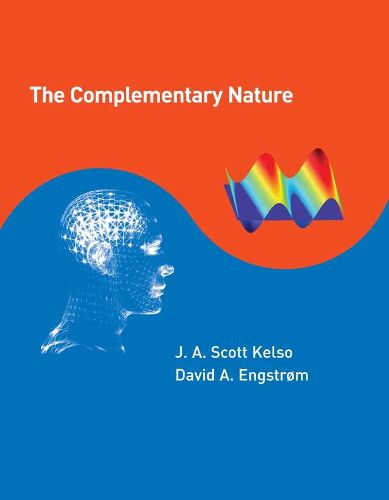Readings Newsletter
Become a Readings Member to make your shopping experience even easier.
Sign in or sign up for free!
You’re not far away from qualifying for FREE standard shipping within Australia
You’ve qualified for FREE standard shipping within Australia
The cart is loading…






Why do we divide our world into contraries? Why do we perceive and interpret so many of life’s contraries as mutually exclusive, either/or dichotomies such as individual~collective, self~other, body~mind, nature~nurture, cooperation~competition? Throughout history, many have recognized that truth may well lie in between such polar opposites. In The Complementary Nature, Scott Kelso and David Engstrom contend that ubiquitous contraries are complementary and propose a comprehensive, empirically based scientific theory of how the polarized world and the world in between can be reconciled. They nominate the tilde, or squiggle (~), as the symbolic punctuation for reconciled complementary pairs.
Experiments show that the human brain is capable of displaying two apparently contradictory, mutually exclusive behaviors at the same time. Coordination dynamics-a mathematically expressed theory that reconciles the scientific language of states with the novel dynamical language of tendencies -attests to the complementary nature inherent in human brains and behavior. It may explain, Kelso and Engstrom argue, why we (and nature) appear to partition things, events, and ideas into pairs. Kelso and Engstrom’s account is not just metaphorical; the reconciliations they describe are grounded in the principles and mathematical language of the theory of coordination dynamics. The Complementary Nature provides a clear-cut methodology for this evolving theory of brain and behavior that can also be applied to areas and developments outside the neurosciences, hence aiding reconciliations within and between disparate fields.
$9.00 standard shipping within Australia
FREE standard shipping within Australia for orders over $100.00
Express & International shipping calculated at checkout
Why do we divide our world into contraries? Why do we perceive and interpret so many of life’s contraries as mutually exclusive, either/or dichotomies such as individual~collective, self~other, body~mind, nature~nurture, cooperation~competition? Throughout history, many have recognized that truth may well lie in between such polar opposites. In The Complementary Nature, Scott Kelso and David Engstrom contend that ubiquitous contraries are complementary and propose a comprehensive, empirically based scientific theory of how the polarized world and the world in between can be reconciled. They nominate the tilde, or squiggle (~), as the symbolic punctuation for reconciled complementary pairs.
Experiments show that the human brain is capable of displaying two apparently contradictory, mutually exclusive behaviors at the same time. Coordination dynamics-a mathematically expressed theory that reconciles the scientific language of states with the novel dynamical language of tendencies -attests to the complementary nature inherent in human brains and behavior. It may explain, Kelso and Engstrom argue, why we (and nature) appear to partition things, events, and ideas into pairs. Kelso and Engstrom’s account is not just metaphorical; the reconciliations they describe are grounded in the principles and mathematical language of the theory of coordination dynamics. The Complementary Nature provides a clear-cut methodology for this evolving theory of brain and behavior that can also be applied to areas and developments outside the neurosciences, hence aiding reconciliations within and between disparate fields.